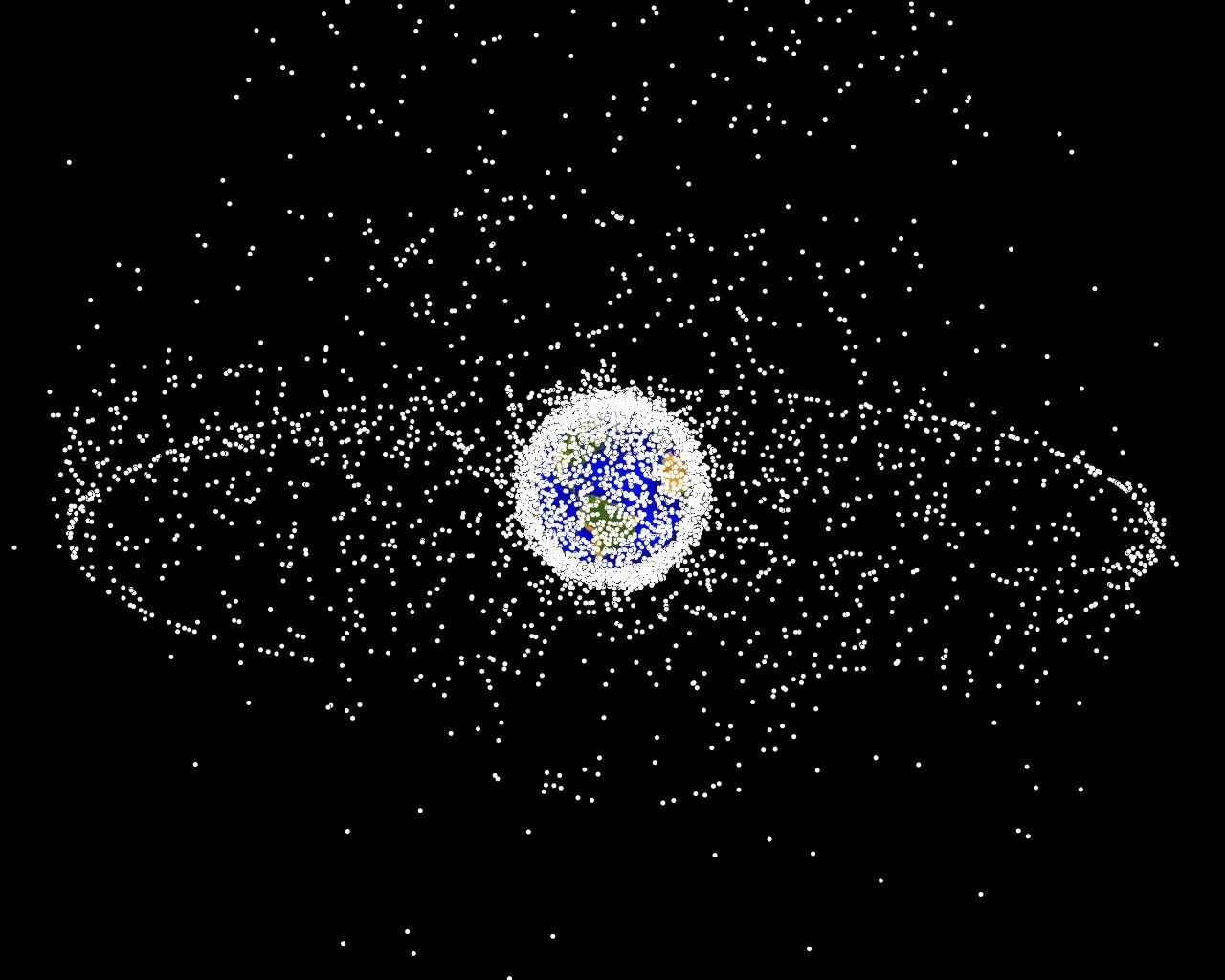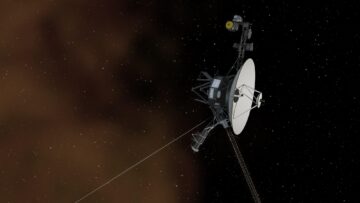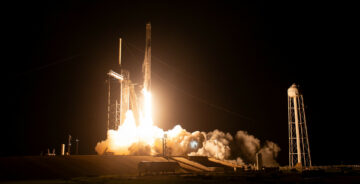
Once upon a time, we thought that our actions were too insignificant to impact something as large as the natural environment — that it wouldn’t be possible for fishermen to exhaust a fishery, that groundwater was so plentiful that conservation was unnecessary, and that the sky was big enough that the odds of two human-created objects colliding in space, much less threatening our ability to make use of orbits, was negligible. Today we know better. But the road from recognizing a resource as finite to managing it in a sustainable manner is long.
As researchers working on the topic of orbital capacity, we regularly engage with stakeholders: governmental representatives, satellite operators, and non-governmental organizations, among others. We recognize a growing awareness and concern that an increasingly congested Low Earth Orbit (LEO) environment could potentially exceed natural capacity, producing significant environmental harms. At the same time, we see a lack of clarity about how to translate this awareness into policy-level discussions and action on orbital use and coordination. In our view, successful orbital management will require explicitly integrating environmental modeling into decision-making on orbital use.
For roughly 20 years, the standard approach to managing the impact of human-made objects on the orbital debris environment has been largely rooted in per-satellite or per-mission requirements, indirectly informed by sporadic technical studies. This makes sense if your primary goal is to avoid grossly irresponsible behavior, and if the number of new spacecraft is predictable and well below the capacity of the system. However, in an era characterized by order of magnitude growth in the active satellite population, relying on fixed rules alone is no longer sufficient to ensure space sustainability. We need to also explicitly manage for capacity if we wish to ensure our use of LEO remains within the capacity of the natural system.
What is orbital capacity?
Orbital capacity is not a number of satellites, but rather a set of bounds on where, how, and how densely satellites make use of orbital volume. Multiple factors, not a straightforward number of satellites, limit orbit use and delineate the set of possible futures with allowable consequences..
What are those constraints? When it comes to physical collision risk, there are at least three: long-term sustainability, operational risk, and orbital volume coordination. Long-term sustainability looks at the evolution of the space environment over decades or centuries, and asks if debris populations will continue to increase in either number or mass. Operational risk concerns the probability that a given spacecraft will be destroyed or disabled by debris over its lifetime as well as the operational burden imposed by collision avoidance. How are these first two constraints different? A particular region might be cluttered enough to pose unacceptable operational risk to operators even without debris growth implicating long-term sustainability concerns. A minefield is dangerous, even if the number of mines is not increasing.
The third constraint relates to coordinating orbital volume among large constellations. We agree with those who call for uncoordinated large constellations to avoid overlapping parking orbits. However, this constraint limits the number of satellites that may be placed in a particular volume of space, particularly if constellations claim overly expansive exclusive operational volumes that exclude others.
Orbital capacity is not a number of satellites, but rather a set of bounds on where, how, and how many satellites make use of orbital volume.
Beyond physical collision risk, there are numerous other factors that potentially constrain orbit use: the degree of risk that material that survives re-entering the Earth’s atmosphere poses to those on the ground, impacts to terrestrial optical and radio astronomy, access to spectrum to communicate with satellites, the potential environmental impact from large amounts of aluminum and other materials being vaporized in the upper atmosphere during re-entry, and the terrestrial sustainability impacts of the space industry.
Some have proposed the use of simplified metrics to approximately quantify aggregate environmental limits and apportion resource use to particular constellations. Simplicity can lend insight. However, such an approach also renders implicit the often imperfect connection between these metrics and the underlying constraints that they seek to reflect. This indirection is not necessarily a problem, but should be undertaken with caution. As Goodhart’s Law warns, a measure that becomes a target often ceases to be a useful measure. Similarly, attempting to move directly to capping or apportioning allowable capacity for individual systems short-circuits the many prerequisite steps necessary for stakeholders to perceive such management as legitimate, making progress that much harder.
Sustainable management of Earth orbit
We know you must still be curious: what is the right number of satellites to share our skies? The frustrating answer is: it depends. Different factors will constrain capacity at different altitudes or under different assumptions for factors such as what satellites will be launched, how responsibly operators will behave on-orbit, and even how effectively we address climate change. Viable solutions are defined by what is feasible considering a set of constraints and assumptions.
Defining these constraints and choosing which ones matter is a blended question of science, stakeholder objectives, technology, and policy — and the solution to that question must necessarily balance the competing values and priorities of a broad and representative set of stakeholders. How much operational risk should operators accept? What do you do when they invariably disagree? How do you weigh the economic benefits of enhanced satellite connectivity against a recognition that, even with mitigations, such deployments may have a substantial impact on ground-based astronomy? Do you take some kind of precautionary action on atmospheric satellite disposals, given our limited understanding of the impact on atmospheric chemistry and climate processes? These questions do not have easy answers, but the resulting value-laden constraints define the limits of the system and distinguish “good” from “bad” futures. Choosing among these solutions is a collective action and resource management problem simultaneously facing operators and regulators from dozens of countries.
So, how do we make progress using the concept of orbital capacity? We believe that four steps are necessary to achieve a future with capacity-aware use of LEO:
- Develop consensus around technical definitions for space sustainability and reasonable modeling assumptions.
We need to build a broad community consensus on which constraints on orbital capacity address the needs of stakeholders. The level of discourse needs to move beyond “avoid Kessler syndrome” to a level of a technical specification sufficient to unambiguously evaluate various futures. Different operators have different views on acceptable levels of operational risk and collision avoidance burden. Regulators have different policy objectives, juxtaposing desires to benefit from space services with the knowledge that fragment counts at certain altitudes will continue to rise over the coming years even absent future launches. Experts can help translate these viewpoints into specific technical constraints, but such constraints must command stakeholder support to be meaningful.
- Mature community confidence in open-source, accessible environmental modeling tools, as well as the capability to use those tools.
Some operators express concern that orbital capacity, once defined, will be used cynically by competitors as a tool for market exclusion or as an arbitrary black-box pocket-veto by regulators. Addressing these concerns necessitates models that are available to the entire community, transparent, and usable by those with varying levels of training. This openness should be a powerful antidote to bad-faith attempts to exploit sustainability concerns to stoke fear, uncertainty, and doubt. Consensus constraints and models can enable apples-to-apples comparisons and segment debate about scientific modeling approaches from discussions on sustainability objectives, efficiency of orbital use, and equity in access to orbital volume. Data-driven techniques, with user-friendly implementations, are necessary to move from intuition to evidence-based decision-making, and to break an intractable and contentious coordination problem into smaller, manageable pieces.
- Build consideration of orbital capacity into regulatory processes.
Per-satellite and per-mission standards are credible as ways to prevent grossly irresponsible behavior, but are insufficient to ensure aggregate traffic levels are actually sustainable. Mission authorization processes should include the use of consensus models to understand the contribution of new missions to the evolution of the space environment. Doing so will require building regulatory and applicant fluency with relevant modeling tools. Established space regulators can start this process, beginning with capacity-related disclosure requirements and safe harbors for review, before gradually moving to include such factors in licensure decisions. Market access conditions can help encourage broader adoption of capacity-based approaches over time. Critically, transparent models and decision criteria improve regulatory certainty for applicants by explaining exactly how the capacity use of their system will be assessed.
- Work towards adaptive management and adaptive governance.
Natural resource management is often characterized by significant uncertainty in both system inputs and response. Progress has already been made in the realm of terrestrial resource management, thanks to adaptive management strategies — using models to inform iteratively-tailored management strategies based on observations of how the environment responds to user behavior — and adaptive governance strategies that remain aligned to stakeholder needs over time. Together, they present a superior alternative to fixed rules and adversarial legal processes as a mechanism for natural resource management. In many cases, voluntary consensus structures can augment or obviate coercive management regimes. We should adapt and apply these mechanisms to managing and coordinating orbital use.
Defining and developing strategies around orbital capacity provides a critical missing link to directly connect sustainability objectives to operator and regulatory decision-making. As the number of spacecraft proposed for LEO continues to increase, explicitly managing for capacity will be an important step to ensure sustainability goals are actually achieved. Getting there will take buy-in, good faith, and hard work from operators, regulators, and stakeholders across the space community. We think it will be well worth the effort. We hope you agree.
Miles Lifson is a PhD candidate in the MIT Department of Aeronautics and Astronautics and a research assistant for the Astrodynamics, Space Robotics, and Controls Laboratory (ARCLab). Richard Linares is an associate professor of Aeronautics and Astronautics at MIT and director of ARCLab.
- SEO Powered Content & PR Distribution. Get Amplified Today.
- PlatoData.Network Vertical Generative Ai. Empower Yourself. Access Here.
- PlatoAiStream. Web3 Intelligence. Knowledge Amplified. Access Here.
- PlatoESG. Carbon, CleanTech, Energy, Environment, Solar, Waste Management. Access Here.
- PlatoHealth. Biotech and Clinical Trials Intelligence. Access Here.
- Source: https://spacenews.com/sustainably-develop-space-manage-orbital-capacity/
- :has
- :is
- :not
- :where
- 20
- 20 years
- a
- ability
- About
- absent
- AC
- Accept
- acceptable
- access
- accessible
- Achieve
- achieved
- across
- Action
- actions
- active
- actually
- adapt
- adaptive
- address
- addressing
- Adoption
- adversarial
- Aeronautics
- against
- aggregate
- aligned
- alone
- already
- also
- alternative
- among
- amounts
- an
- and
- answer
- answers
- Antidote
- applicants
- Apply
- approach
- approaches
- approximately
- ARE
- around
- AS
- assessed
- Assistant
- Associate
- assumptions
- astronomy
- At
- Atmosphere
- atmospheric
- attempting
- Attempts
- augment
- authorization
- available
- avoid
- awareness
- Balance
- based
- BE
- becomes
- been
- before
- Beginning
- behave
- behavior
- being
- believe
- below
- benefit
- benefits
- Better
- between
- Beyond
- Big
- Black-box
- both
- bounds
- Break
- broad
- broader
- build
- Building
- burden
- but
- by
- call
- CAN
- candidate
- capability
- Capacity
- cases
- caution
- centuries
- certain
- certainty
- characterized
- chemistry
- choosing
- claim
- clarity
- Climate
- Collective
- Collective Action
- collision
- comes
- coming
- coming years
- communicate
- community
- comparisons
- competitors
- concept
- Concern
- Concerns
- conditions
- confidence
- Connect
- connection
- Connectivity
- Consensus
- Consequences
- CONSERVATION
- consideration
- considering
- constraints
- continue
- continues
- contribution
- controls
- coordinating
- coordination
- could
- countries
- credible
- criteria
- critical
- curious
- Dangerous
- data-driven
- debate
- decades
- decision
- Decision Making
- decisions
- define
- defined
- definitions
- Degree
- Department
- deployments
- destroyed
- develop
- developing
- different
- directly
- Director
- disabled
- disclosure
- discourse
- discussions
- distinguish
- do
- doing
- doubt
- dozens
- during
- earth
- easy
- Economic
- effectively
- efficiency
- effort
- either
- enable
- encourage
- engage
- enhanced
- enough
- ensure
- Entire
- Environment
- environmental
- equity
- Era
- established
- evaluate
- Even
- evolution
- exactly
- exceed
- Exclusive
- expansive
- experts
- explaining
- explicitly
- Exploit
- express
- facing
- factors
- faith
- fear
- feasible
- First
- fixed
- For
- four
- from
- frustrating
- future
- Futures
- getting
- given
- goal
- Goals
- good
- governance
- governmental
- gradually
- Ground
- Growing
- Growth
- Hard
- hard work
- harder
- harms
- Have
- help
- hope
- How
- How To
- However
- HTTPS
- if
- Impact
- Impacts
- implementations
- important
- imposed
- improve
- in
- include
- Increase
- increasing
- increasingly
- indirectly
- individual
- industry
- inform
- informed
- inputs
- insight
- Integrating
- into
- intuition
- invariably
- IT
- ITS
- jpg
- Kind
- Know
- knowledge
- laboratory
- Lack
- large
- largely
- launched
- launches
- least
- Legal
- legitimate
- LEND
- LEO
- less
- Level
- levels
- lifetime
- LIMIT
- Limited
- limits
- LINK
- Long
- long-term
- longer
- LOOKS
- Low
- made
- make
- MAKES
- Making
- manage
- manageable
- management
- managing
- manner
- many
- Market
- Mass
- material
- materials
- Matter
- May..
- meaningful
- measure
- mechanism
- mechanisms
- Metrics
- might
- mines
- missing
- Mission
- missions
- MIT
- modeling
- models
- move
- moving
- much
- must
- Natural
- necessarily
- necessary
- necessitates
- Need
- needs
- New
- no
- number
- numerous
- objectives
- objects
- observations
- Odds
- of
- often
- on
- once
- ones
- open source
- Openness
- operational
- operator
- operators
- optical
- or
- Orbit
- order
- organizations
- Other
- Others
- our
- over
- parking
- particular
- particularly
- phd
- physical
- pieces
- placed
- plato
- Plato Data Intelligence
- PlatoData
- policy
- population
- populations
- pose
- poses
- possible
- potential
- potentially
- powerful
- Predictable
- present
- prevent
- primary
- probability
- Problem
- process
- processes
- producing
- Professor
- Progress
- proposed
- provides
- question
- Questions
- Radio
- rather
- realm
- reasonable
- recognition
- recognize
- recognizing
- reflect
- regimes
- region
- regularly
- Regulators
- regulatory
- relates
- relevant
- relying
- remain
- remains
- renders
- representative
- Representatives
- require
- Requirements
- research
- researchers
- resource
- response
- responsibly
- resulting
- review
- Richard
- right
- Rise
- Risk
- road
- robotics
- rooted
- roughly
- rules
- safe
- same
- satellite
- satellites
- Science
- scientific
- see
- Seek
- segment
- sense
- Services
- set
- Share
- should
- significant
- Similarly
- simplicity
- simplified
- simultaneously
- skies
- sky
- smaller
- So
- solution
- Solutions
- some
- something
- Space
- space industry
- spacecraft
- specific
- specification
- Spectrum
- sporadic
- stakeholder
- stakeholders
- standard
- standards
- start
- Step
- Steps
- Still
- straightforward
- strategies
- structures
- studies
- substantial
- successful
- such
- sufficient
- superior
- support
- Sustainability
- sustainable
- sustainably
- system
- Systems
- Take
- Target
- Technical
- techniques
- Technology
- terrestrial
- thanks
- that
- The
- their
- There.
- These
- they
- Think
- Third
- this
- those
- thought
- three
- time
- to
- today
- together
- too
- tool
- tools
- topic
- towards
- traffic
- Training
- translate
- transparent
- two
- Uncertainty
- under
- underlying
- understand
- understanding
- unnecessary
- upon
- usable
- use
- used
- useful
- User
- user-friendly
- using
- Values
- various
- varying
- viable
- View
- viewpoints
- views
- volume
- volumes
- voluntary
- Warns
- was
- ways
- we
- weigh
- WELL
- were
- What
- What is
- when
- which
- WHO
- will
- wish
- with
- within
- without
- Work
- working
- worth
- years
- you
- Your
- zephyrnet






